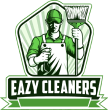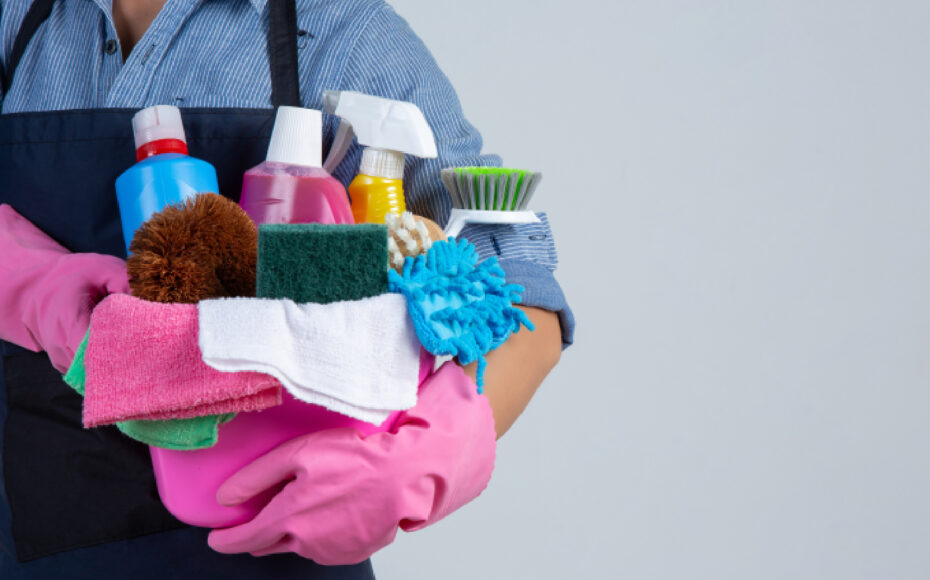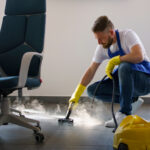Introduction
Cleanliness in medical practices is far more than a matter of appearance. Unlike ordinary workplaces, healthcare environments are highly sensitive. Patients come with compromised immunity, and staff are constantly exposed to pathogens. In this setting, even minor lapses in hygiene can have serious consequences. Professional cleaning services play a vital role in maintaining standards that safeguard patient health, ensure regulatory compliance, and build trust.
This blog explores how professional cleaning services enhance medical practice standards, the risks of inadequate cleaning, the strategies professionals employ, and the tangible benefits for healthcare providers. By understanding the critical role of cleaning in healthcare, practices can elevate safety, reputation, and operational excellence.
Why cleanliness is critical in medical practices
Patient safety and infection control
Healthcare-associated infections (HAIs) are a major concern worldwide. Contaminated surfaces, improperly sanitized equipment, and poor hygiene practices contribute to the spread of bacteria and viruses. Professional cleaning minimizes these risks by ensuring thorough disinfection of high-touch areas and adherence to strict protocols.
Regulatory compliance
Medical practices are subject to stringent guidelines set by health authorities. Failure to maintain cleanliness can result in penalties, license suspensions, or legal liability. Professional cleaning services are familiar with these standards and tailor their approach to ensure compliance.
Trust and reputation
Patients often judge a clinic or medical practice by its appearance. A visibly clean environment reassures them that they are receiving care in a safe and professional setting. Conversely, dirty waiting rooms or unsanitized restrooms can damage reputation and drive patients away.
The hidden dangers of poor cleaning in healthcare
Spread of infectious diseases
Viruses like influenza and COVID-19, as well as bacteria such as MRSA, thrive in unclean medical spaces. These pathogens spread quickly from surfaces to patients and staff, increasing illness rates.
Cross-contamination risks
Medical practices often treat multiple patients daily, some with highly contagious conditions. Without professional cleaning, there is a high risk of cross-contamination through shared equipment, door handles, and seating areas.
Damage to sensitive equipment
Medical equipment such as diagnostic machines, sterilization units, and electronic devices require specific cleaning methods. Improper cleaning can damage these tools, leading to costly repairs or replacements.
Decline in staff performance
Doctors, nurses, and support staff are more motivated when they work in a clean and organized environment. Poor cleanliness can cause discomfort, stress, and even sickness, reducing productivity and patient care quality.
How professional cleaning services uphold medical practice standards
Specialized training and expertise
Professional cleaners in healthcare undergo training in infection control, hazardous waste disposal, and use of medical-grade disinfectants. Their expertise ensures every area is cleaned to standards suitable for clinical environments.
Use of hospital-grade disinfectants
Ordinary cleaning products are not enough for medical practices. Professionals use disinfectants that kill bacteria, viruses, and fungi effectively while being safe for sensitive environments.
High-touch surface sanitization
Surfaces like door handles, light switches, exam tables, and chairs are sanitized frequently. These areas are the most likely to spread infections and therefore require extra attention.
Adherence to cleaning protocols
Professional cleaners follow detailed protocols, such as the CDC’s guidelines for environmental infection control. This structured approach ensures consistency and minimizes risks of oversight.
Waste management expertise
Medical waste, including sharps, bandages, and used gloves, must be disposed of according to strict regulations. Professional cleaners ensure safe collection and disposal, protecting staff and patients from hazards.
Areas of a medical practice that require professional cleaning
- Waiting rooms
- Chairs, tables, magazines, and toys must be sanitized daily to prevent cross-contamination.
- Examination rooms
- Exam tables, equipment, and sinks require disinfection between every patient.
- Restrooms
- Toilets, sinks, and floors must be disinfected multiple times daily.
- Staff rooms
- Cleanliness supports staff health and reduces risks of carrying pathogens into patient areas.
- Reception areas
- Desks, phones, and computers are cleaned to reduce transmission through high-touch items.
- Storage areas
- Proper organization and sanitization prevent contamination of medical supplies.
The role of technology in professional medical cleaning
UV-C disinfection
Ultraviolet light is used to destroy pathogens on surfaces and in the air. Professional cleaning services employ this technology for added safety.
Electrostatic spraying
This method evenly distributes disinfectant across surfaces, ensuring thorough coverage even in hard-to-reach areas.
HEPA filtration systems
Vacuum cleaners with HEPA filters remove fine particles, dust, and allergens, improving air quality in clinics.
Smart cleaning schedules
Some professional services use digital tools to track cleaning activities, ensuring accountability and real-time reporting for healthcare administrators.
Benefits of professional cleaning for medical practices
Reduced risk of infections
Consistent, thorough cleaning lowers the incidence of healthcare-associated infections, protecting patients and staff.
Improved patient confidence
Patients are more likely to return and recommend a practice that is visibly clean and hygienic.
Increased staff morale
Employees working in sanitized environments feel safer and more valued, boosting motivation and reducing turnover.
Longer lifespan of equipment and furniture
Proper cleaning extends the life of costly medical tools and furniture, reducing repair and replacement expenses.
Better compliance with inspections
Healthcare facilities undergo inspections by health authorities. Professional cleaning ensures readiness and avoids penalties.
Real-world case studies
Pediatric clinic
A pediatric clinic introduced professional daily cleaning with medical-grade disinfectants. Within six months, they recorded a 30 percent reduction in reported illness among staff and improved patient satisfaction scores.
Dental practice
A dental practice faced challenges with cross-contamination in treatment rooms. After adopting professional cleaning protocols, they passed inspections flawlessly and improved operational efficiency.
Family medicine practice
Patients complained about the cleanliness of waiting areas. By outsourcing to professional cleaners, the practice improved first impressions and saw a 20 percent increase in patient referrals.
Common mistakes medical practices make without professionals
- Using household cleaning products instead of hospital-grade disinfectants
- Overlooking high-touch areas like keyboards and phones
- Inconsistent cleaning schedules leading to dirt buildup
- Improper waste disposal that violates regulations
- Assigning cleaning duties to staff not trained in infection control
These mistakes not only compromise safety but also risk reputational damage.
How to choose the right professional cleaning service
Experience in healthcare cleaning
Select companies with proven expertise in medical environments rather than general office cleaning.
Compliance knowledge
Ensure they understand and follow local health regulations and industry standards.
Customizable cleaning plans
Every medical practice has unique needs. A good service tailors schedules and methods accordingly.
Transparent reporting
Look for providers that offer detailed reports of tasks completed, chemicals used, and inspection results.
Eco-friendly practices
If sustainability is important to your practice, choose services that use environmentally safe products without compromising effectiveness.
Steps to integrate professional cleaning into your practice
- Assessment – Conduct a thorough evaluation of current cleaning practices.
- Consultation – Meet with professional cleaning providers to discuss needs.
- Plan development – Create a customized schedule and checklist.
- Implementation – Start regular cleaning with professional oversight.
- Monitoring and feedback – Track results, patient feedback, and staff input to improve over time.
The future of medical practice cleaning
The importance of hygiene in healthcare has only increased post-pandemic. Future trends include:
- Automation and robotics for floor cleaning and disinfection
- Advanced antimicrobial coatings on high-touch surfaces
- AI-driven monitoring to predict and prevent contamination risks
- Green cleaning initiatives to balance hygiene with environmental responsibility
These innovations ensure that professional cleaning services will remain integral to medical practice standards.
Conclusion
Professional cleaning services are essential for maintaining and enhancing the standards of medical practices. From reducing infections and ensuring compliance to boosting staff morale and patient trust, the benefits are wide-reaching. Healthcare environments demand a level of cleanliness far beyond ordinary workplaces, and only professional services can consistently meet these demands. By investing in expert cleaning, medical practices protect their patients, improve their reputation, and strengthen overall operations. In a field where safety and trust are non-negotiable, professional cleaning is not just an option. It is a necessity that elevates the quality of care and the standards of the practice itself.




